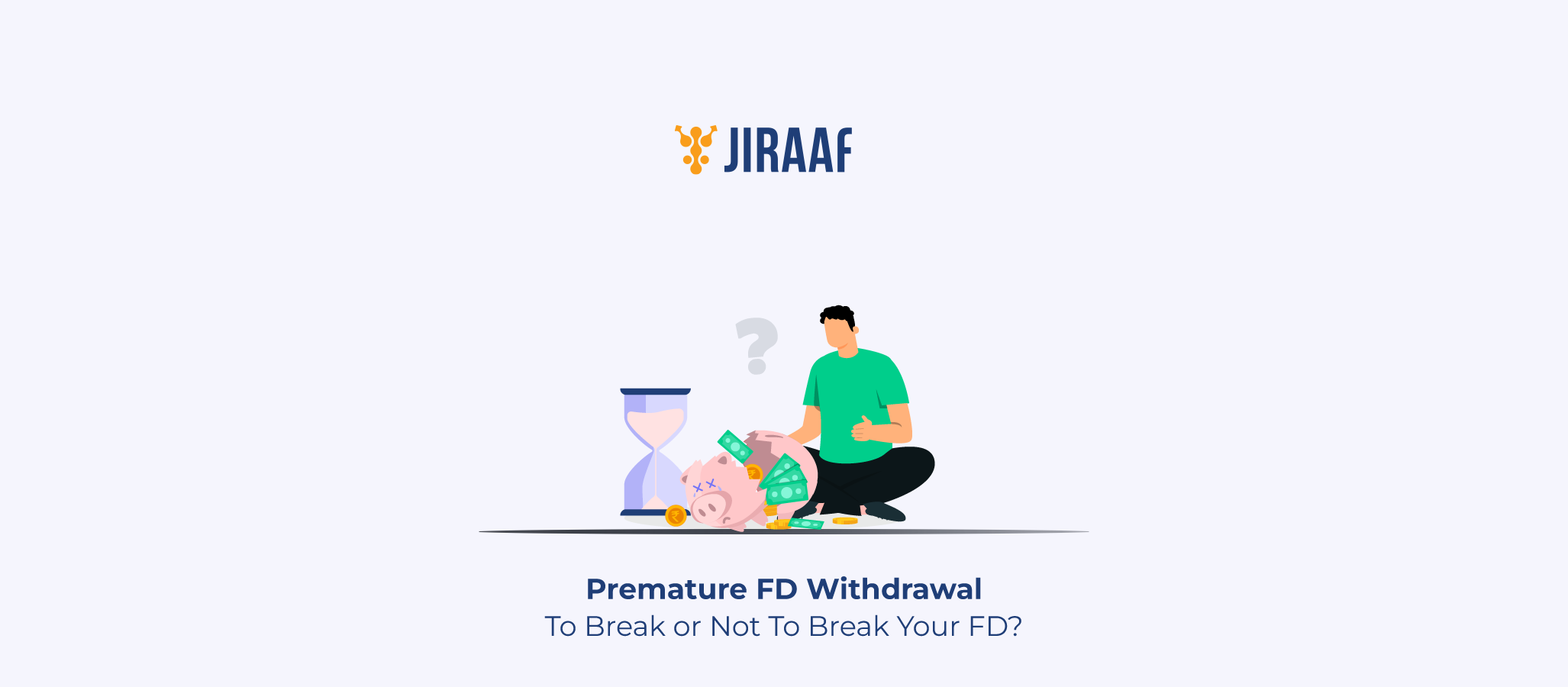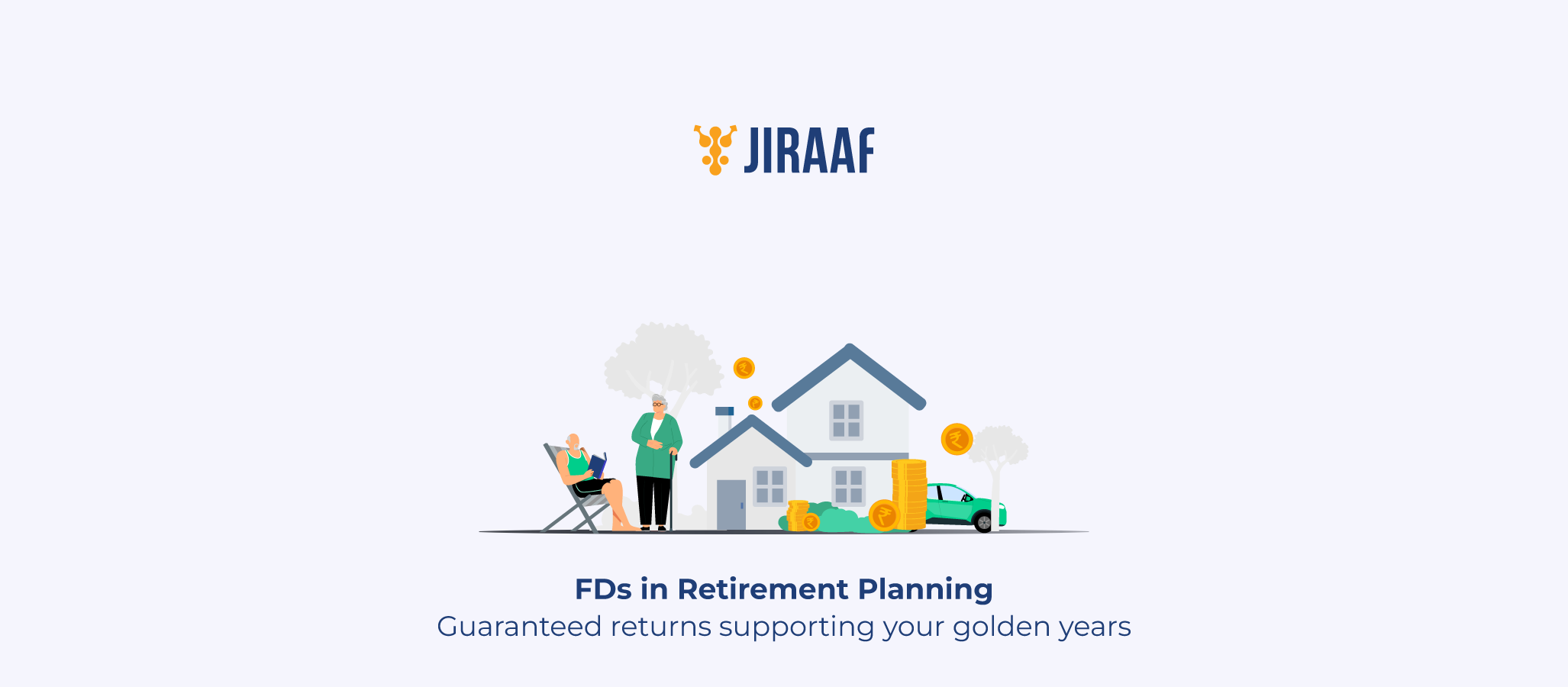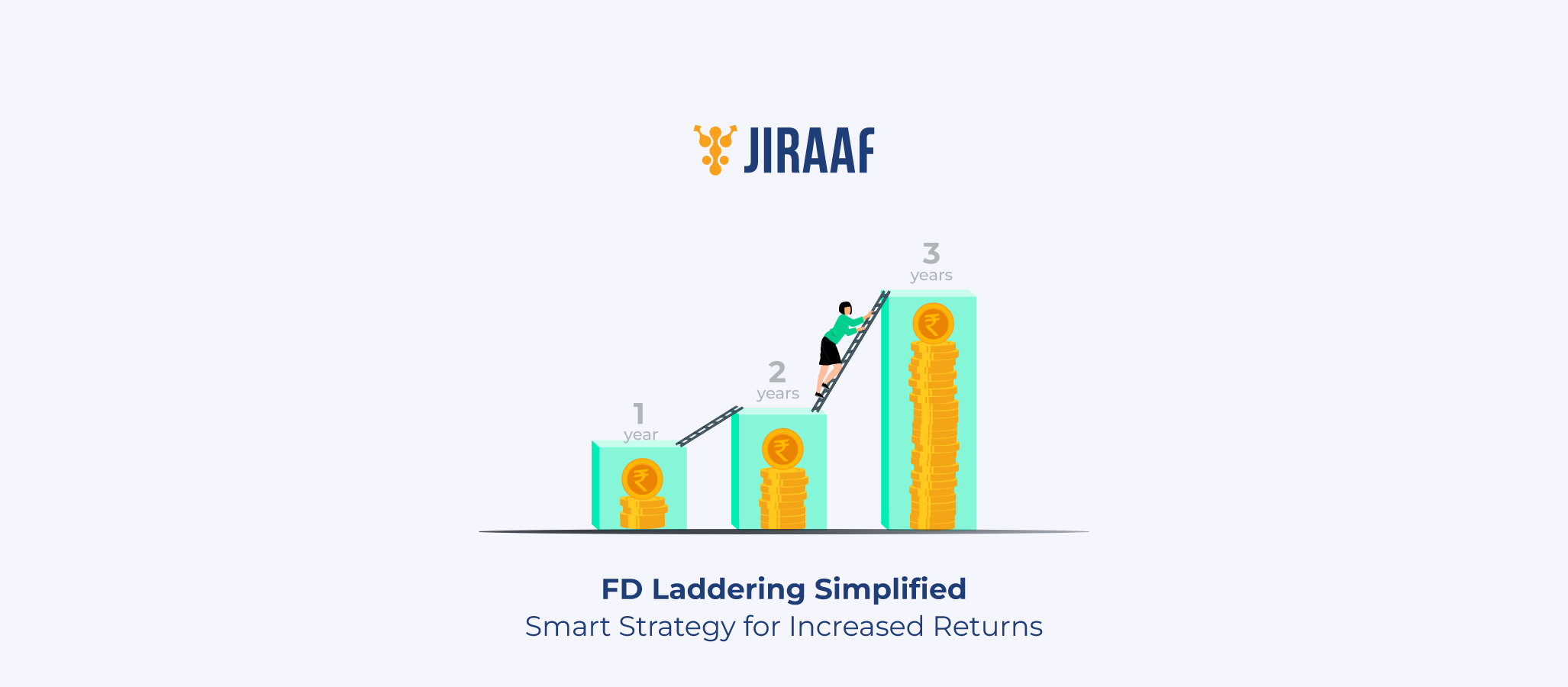We open an FD account hoping for security, picturing the profits, the stability, and the goals we want to reach as it matures. However, things don’t always go as planned in life. We may have to reconsider our choices due to unforeseen costs, medical situations, or tempting investment opportunities.
Sometimes, when things like these happen, you have no option but to break an FD. But breaking doesn’t just mean withdrawing your funds before maturity. It also sometimes means giving up on the dream you have nurtured with the FD for so long.
Even though breaking your FD is not the end of the world, it makes all the difference to know when and how to do it properly. For instance, taking out a costly loan might not be the best choice if, say, someone at home needs money for college. Breaking the FD might be the right thing to do, as you can avoid paying high interest rates.
This blog looks at the primary scenarios in which breaking an FD before maturity makes sense, the process involved, and the ways to minimize your financial damage when doing so.
What does Prematurely Withdrawing an FD Mean?
It simply means taking out your money from the account before the FD matures with interest.
Reasons For Breaking a Fixed Deposit
Here are some common reasons why we consider breaking FDs before maturity.
- Emergency costs: Unexpected medical bills, home expenses, or even family emergencies very often demand immediate or rather quick access to money.
- Better investment opportunities: When you find investment options with yields exceeding the returns expected from an FD, post factoring in the penalties of breaking an FD, you might want to shift your funds.
- Loan repayment: When you have a loan requirement, in order to avoid paying high interest rates on loans, you might choose to break the FD early and pay it off quickly.
- Change in financial goals: Life priorities can go from education to starting a new business to buying a home, which calls for early withdrawals.
Process of Prematurely Breaking a Fixed Deposit
You can break an FD prematurely online through the bank’s net banking website portal or by going to a branch and completing the necessary documentation. This premature withdrawal can also result in a penalty. The bank will decide the amount you need to pay, deduct fines or penalties, and credit the money to your account.
You can choose one of these two methods:
Online Method
- Log into the bank’s net banking portal using your credentials like name, phone number, account number, FD number, etc.
- Find the fixed deposit section and select the option for a premature withdrawal of FD.
- Submit the request, follow the prompts, and seek a premature withdrawal.
- Verify the specific details like the maturity date, interest rate, and penalty amount.
- Confirm the final closure request.
- Lastly, the bank will deduct any penalties (if applicable) and credit the balance to your connected savings account.
Offline Method
- Visit the bank branch where your FD account was originally opened, because this is where your deposit records are kept and your request can be processed.
- Request for a premature FD withdrawal form.
- Fill out and submit the form with the necessary information, including your name, FD number, and relevant account information. You can also be asked to show proof of ID, so keep those handy.
- Once the process is completed, the bank will handle the request and deduct any applicable fines and credit the balance to your connected savings account.
Penalties and Implications
Indian banks typically charge you a penalty of 0.5% to 1% for prematurely withdrawing a fixed deposit. Although the process is straightforward, there are several factors to be considered before going ahead.
Even though breaking an FD prematurely gives you quick access to funds when you need them, it comes with clear disadvantages. The most immediate one is that your returns are reduced. You don’t get the full amount you would have gotten at maturity, as banks revise their interest based on the revised tenure and impose penalties. Some
may also deduct tax at source, further diminishing your earnings.
More importantly, breaking an FD prematurely can disrupt your broader financial plans. Whether the funds were earmarked for a child’s education, a major purchase, or retirement, accessing them early could set you back or force difficult compromises later. It also risks weakening your disciplined habit of long-term saving.
Alternatives to Breaking a Fixed Deposit
Breaking an FD before maturity can lead to losing money or earning less interest, although options like partial fund withdrawals, loans against FD, and credit cards against the FD can help make great decisions for your future with respect to investments and savings. If you need to break your fixed deposit prematurely, be mindful of the penalties and choose the most cost-effective option.
Partial Withdrawal of Funds
The first option that you can look at is partially pulling your money out. A lot of banks let you withdraw a bit of your FD while the remaining money earns interest at the original rate. This means that there is no need to break your FD and miss out on the benefits of long-term investments.
If you only need a small amount of money, say for sudden medical bills, house renovations, or a short-term emergency, a partial withdrawal is a great option. It gives you the money you need without disrupting your entire investment and earning interest on it. These are great for when you quickly need cash. Instead of jeopardizing the whole FD savings, you have the flexibility to fulfill your needs while staying invested for the long run.
Loans Against FDs
The second option could be taking a loan against your FD. Banks give you the option of taking a loan of up to 90% of the FD’s value against it as collateral. The interest rate on these loans is usually 1-2% higher than the FDs, making it a much cheaper option than personal loans or credit card borrowing. Taking out a loan on the deposit gives you access to your money without disrupting your investment.
The FD continues to earn the initial interest, so your long-term savings are safe. Also, the deposit itself serves as collateral, so there is barely any paperwork, the process is quick, and there is no need for extra security. You can repay the loan easily, and the total FD stays intact till maturity. This is a great alternative if you need money urgently but want to continue making money. It is handy if you want to avoid penalty fees or lower profits.
Credit Cards Against FDs
When you want flexibility, an FD credit card can be very useful. It boosts your borrowing power, helps you manage your spending, and builds a strong credit history. It is perfect for young professionals, students, or anyone new to credit who wants to build a respectable financial history without jeopardizing their funds. The approval is straightforward because it is secured against your FD.
It may be difficult to get a standard credit card if you have no previous credit history or a low credit score. Some banks offer secured credit cards against the FD as a solution, letting you use the credit card with your FD as security.
Overdraft Facility Against FDs
With an overdraft facility against an FD, you can borrow money without breaking the deposit by using your FD as collateral. Banks give this as a secured loan, allowing you to take out up to a set portion of your FD balance, usually 90%.
Banks often offer reasonable interest rates on FD-backed loans, which are considerably lower than those with unsecured loans or credit cards. This makes overdrafts against fixed deposits a low-cost and simple alternative to obtaining liquidity while allowing it to continue earning interest over time.
An overdraft offers a high loan-to-value ratio, which means you’re borrowing more, putting in less of your own money, usually around 80% of the FD value, with low interest rates around 2%, making it a cost-effective borrowing option. The process is flexible, and there are no borrowing charges or EMI obligations.
Conclusion
If you’re thinking about breaking your FD, pause for a moment; not just to calculate the penalty, but to ask what that decision signals about the way you’ve structured your finances.
Are you over-relying on fixed deposits for both safety and liquidity? Are your short-term needs eating into long-term plans? These are the gaps you want to spot and fix, not just for now, but to avoid being in the same position some months later.
Start by building a clearer separation between your emergency funds, opportunity capital, and long-term savings. Don’t invest everything in FDs just because they feel safe. Instead, use them as one layer in a more responsive strategy. Lastly, remember breaking an FD isn’t a failure; it’s feedback. Use it to realign your financial system so that next time, you have better options on the table.
Discover fixed income investments with Jiraaf, a SEBI registered online bonds platform that educates and brings access to a wide array of bonds. Sign up today to explore diversified fixed income investment opportunities to support your goal-based wealth creation journey. Start investing!



